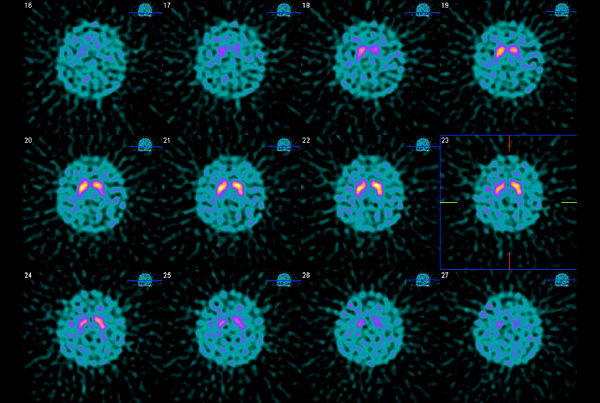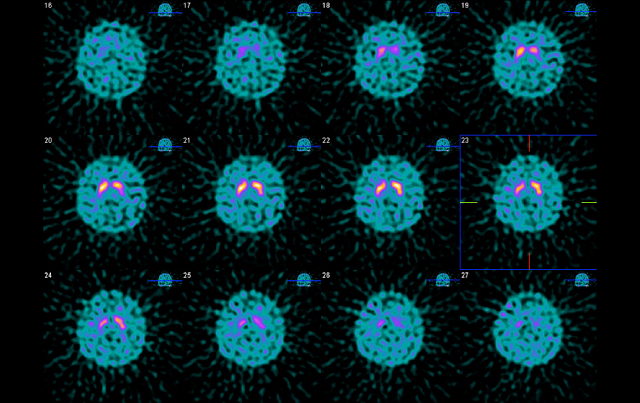Essential Tremor Versus Parkinsonian Syndromes

DaTscan affects the diagnosis and management of movement disorders

Erick Kovalsky, MD
Differentiating between essential tremor (ET) and Parkinsonian syndromes (PS) became clearer with FDA approval of DaTscan, an imaging agent used with single photon emission computed tomography (SPECT), in 2011. The agent binds to the dopamine transporters (DaT) in the brain, which can be visualized by SPECT/CT. DaT concentrations are lower in patients with Parkinson’s disease but will generally be normal in those with ET.
In a study of 273 people with clinically uncertain Parkinsonian syndromes, 50 percent of those in the DaTscan group had at least one change in clinical management by 12 weeks compared with 31 percent of those in the non-imaged group. In addition, the confidence in diagnosis score rose significantly more among the DaTscan group compared to the control group.
That degree of confidence has made DaTscans popular among neurologists. Eric Kovalsky, MD, a nuclear medicine radiologist at Scottsdale Medical Imaging (SMIL), says that SMIL radiologists already have extensive experience in DaTscan interpretation and currently perform multiple DaTscans in any given week.
“Neurologists find it helpful in confirming diagnosis,” Kovalsky says. “The goal is to direct management of the patients. In those cases when a patient has already received a diagnosis and is responding well to treatment, then DaT/SPECT imaging would not add any new information and is unnecessary. It is the cases where the patient isn’t responding to treatment or where an invasive procedure is being considered that DaTscan can be very helpful. Clear and timely diagnosis paves
the way for early intervention and disease management.”
SMIL has five physicians specially trained in nuclear medicine who are familiar with reading DaTscans and have been reading them since FDA approval, Kovalsky adds. •
REFERENCE:
Kupsch A, Bajaj N, Weiland F, et al. Impact of DaTscan SPECT imaging on clinical management,
diagnosis, confidence of diagnosis, quality of life, health resource use and safety in patients with
clinically uncertain parkinsonian syndromes: a prospective 1-year follow-up of an open-label
controlled study. J Neurol Neurosurg Psychiatry. 2012;83:620-628


